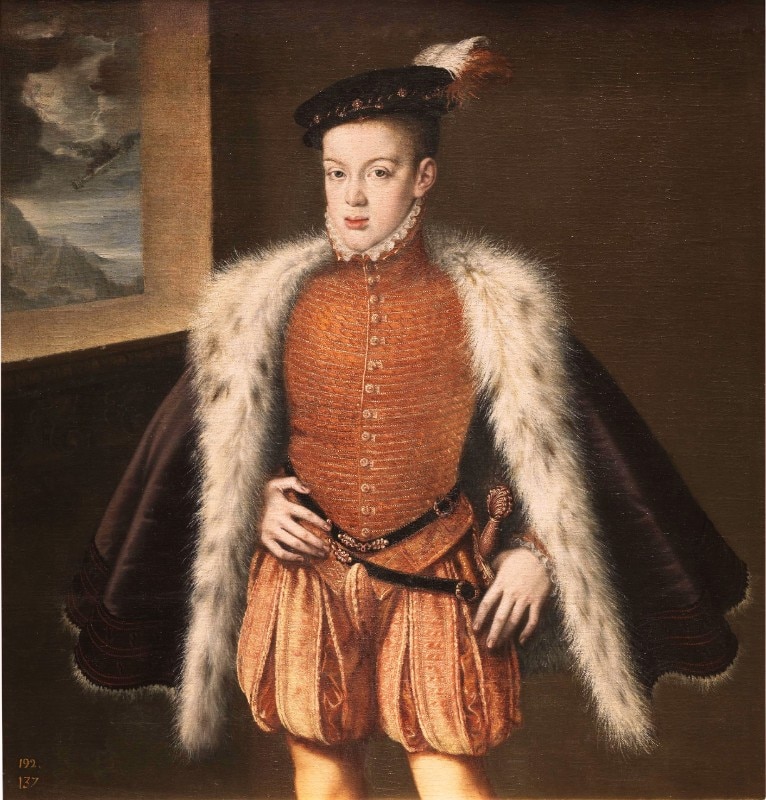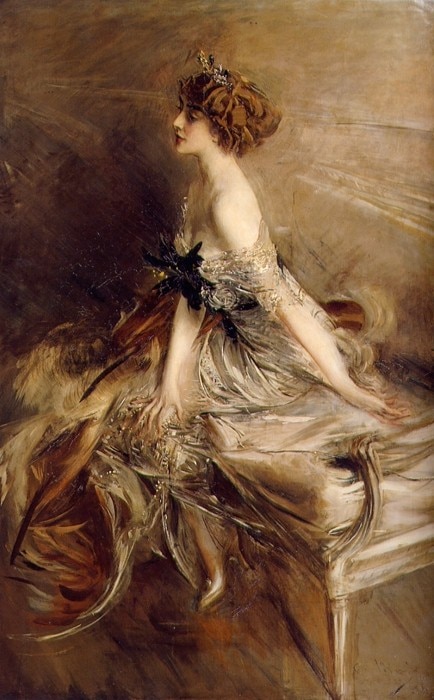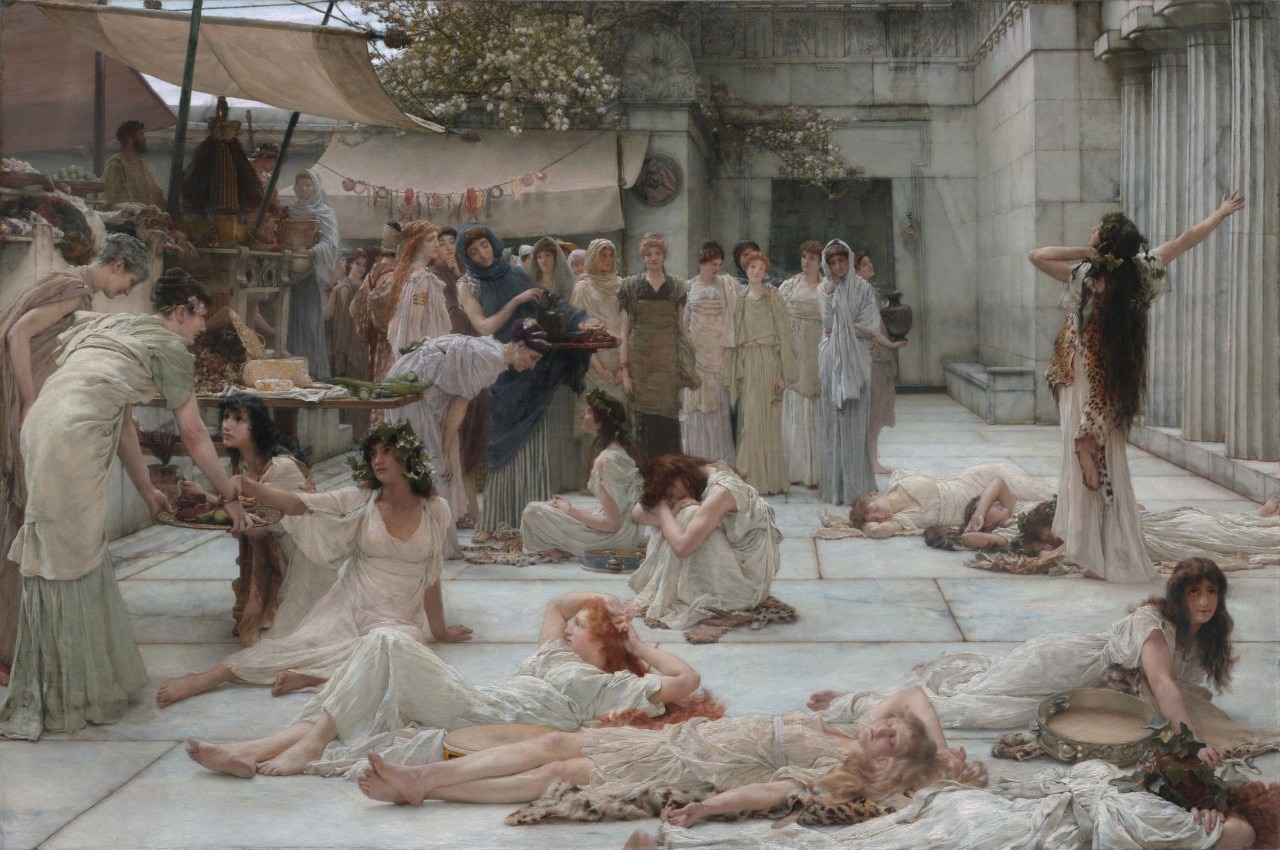Manner, rhythm, rules, quantity, time, sound, norm, moderation, tone. Fashion.
The long-awaited Milan fashion week, which started right after the London edition and right before the Paris one, has just ended. Because of the pandemic, it’s been a mix of real and virtual, but it has however achieved great success and showed spectacular realizations such as Prada’s Virtual Reality project.
But when was fashion born? And, above all, what was its original function?
In ancient Greece and ancient Rome, clothing had precise functions, for example to distinguish individuals based on their social class and priestly, administrative or military duties. Fabrics draped around the body, long tunics open on one side, and plain belts to tightly secure the clothes at the waist.
However, over the centuries, fashion and fabrics have influenced the consistency of the greatest painters’ brushstrokes and the incisiveness of the sculptors’ chisels. Gods, kings and queens, emperors and empresses, saints, Madonnas and Christs used to dress and be represented following the fashion trends of their time. Fashion has not only dictated forms and representations, but also directly influenced the styles of the painters. How could Agnolo Bronzino’s paintings not be influenced by the magnificent brocades of his Florentine ladies, which he so often represented?
How can we not think that, maybe, Giovanni Boldini would have painted differently if his women hadn’t been wearing all that silk and white satin? How much does the success of Jean-Honoré Fragonard’s paintings owe it to hoop skirts and taffeta? His frivolous, lascivious women, like those of François Boucher, where represented like this precisely because of fashion.

In art, clothes influence styles and leave room for visual interpretations that artists tend to make their own. That of art and fashion is a dichotomy where contaminations, overlapping, collaborations and influences, which go from ancient times to the more recent contemporaneity, become necessary. Art and fashion have often confronted each other. For painters, clothes have always been essential tools for their art. For craftsmen and designers, paintings have been great sources of inspiration – let’s just think of the Dolce & Gabbana collection inspired by baroque painting. For scholars, the clothing represented in a painting is of great help when it comes to date the work of art: the details of the clothes, accessories, headgear, hairstyles, are essential to translate and understand the painting.
Tailors and stylists become some kind of architects, and the painter translates their thought, making it become his distinctive feature.
Jacopo Robusti, the most famous Venetian painter, got the nickname Tintoretto (literally: little dyer) because he was the son of a silk dyer. So, he was closely linked with fashion. His elegant paintings represented doges and courtesans, different people united by precise iconographic details: furs and headgear, jewelry, combs, mirrors. The canvases he used turned out to be made of linen with different weaves, whether it be a simple weave like tabì, which is similar to the taffeta weave, or a more robust and thicker weave, like the one he used for The Last Supper.

From the 17th century Spanish works by Zurbarán and Velazquez to the romantic depictions of 19th century Paris by Monet and Toulouse-Lautrec – designer Cristòbal Balenciaga drew inspiration from countless paintings for his creations. Many of the themes of these paintings can be found in Balenciaga’s prolific production, from the structure to the manufacture and ornament of the designs.
The creative trajectory of the Spanish designer has been strongly influenced by many cultures around the world, as well as by the art, nature and spirit of his own country, Spain. Balenciaga sought exceptional inspiration from the work of 18th century Spanish artist Francisco Goya, extracting creative elements of visual contrast related to color and silhouette from Goya’s paintings. In the 1555 portrait of Prince Don Carlos of Austria, Sánchez Coello depicts the young prince in a cape lined with lynx fur, from which the Spanish designer drew inspiration to create the wedding dress worn by Queen Fabiola of Belgium in 1960. This particular creation then became a signature piece for Balenciaga, a bit like when painters added monograms or symbols on their canvases.
Oscar Wild used to say: “One should either be a work of art, or wear a work of art”. And how can we blame him?
Opening image: The Women of Amphissa, Lawrence Alma-Tadema, 1887
















